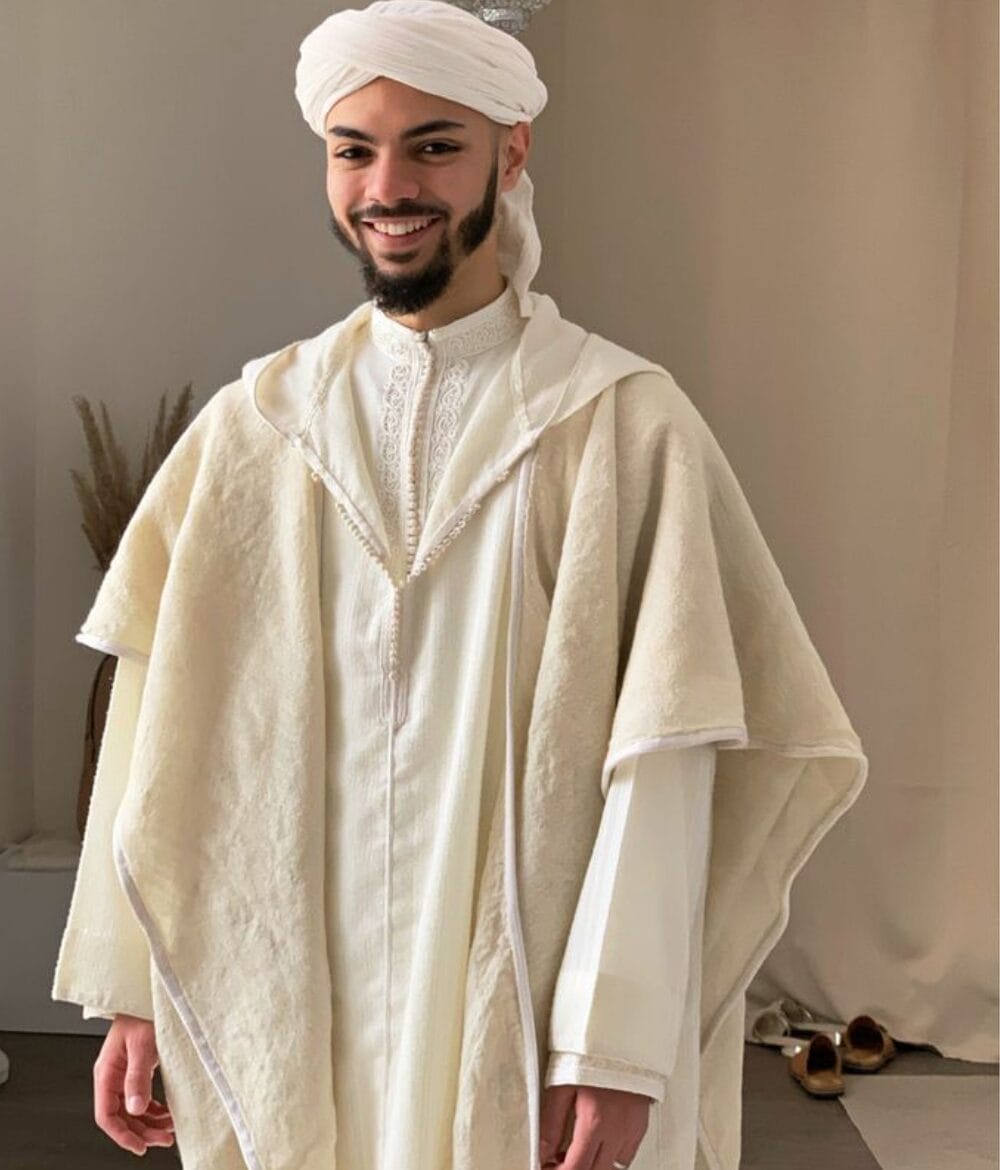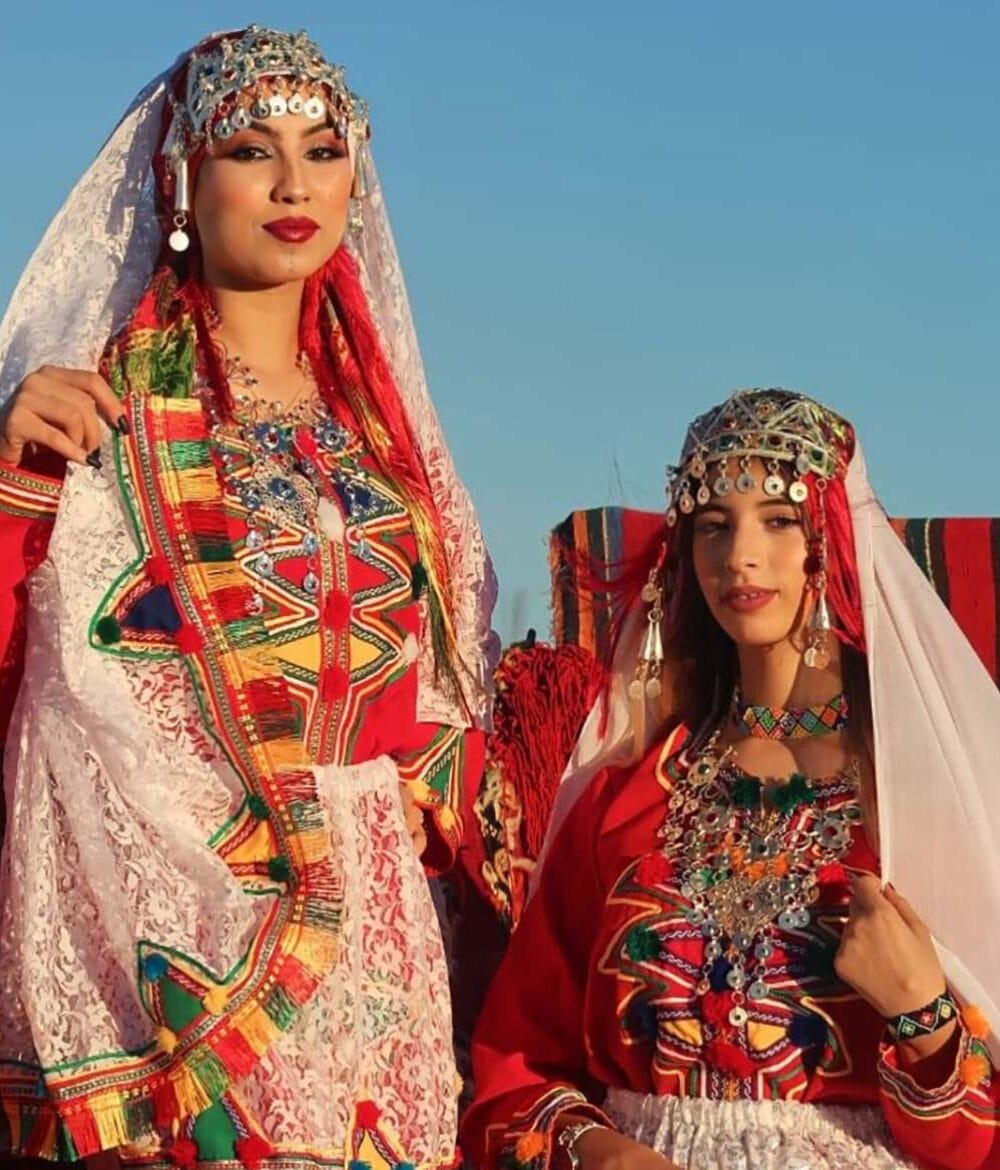No products in the cart.
Traditional Berber Attire and Its Cultural Significance
ⵜⵓⵙⵙⵓⵏⵜ ⵉⵎⵣⵉⵖⵏ ⵏ ⵜⵓⵏⴰⴽⵜ ⴷ ⵜⴰⵏⴰⵎⴰⵜ ⵜⴰⵏⵉⵖⵉⴽⵜ
The Berber people, or Imazighen, are an indigenous group native to North Africa, with a rich and diverse cultural heritage. Among the most striking aspects of their identity is their traditional attire, which reflects their history, values, and regional diversity. From the flowing djellabas to the intricate Amazigh jewelry, Berber clothing is a tapestry of cultural symbolism and artistic expression. Let’s delve into the history, cultural significance, and regional variations of these traditional garments.
ⴰⵎⴽⴰⵏ ⵉ ⴷ ⴼⵓⵙ ⴷ ⵙⴻⴷⴷⵓⴽ, ⴰⴷ ⵉⴳ ⵉⵍⵍⴰⵏ ⵜⴰⴼⵓⴽⵜ.
Historical Context of Berber Attire
Berber clothing has evolved over centuries, blending practicality, aesthetics, and cultural identity. The Berbers have historically inhabited diverse landscapes, from the arid Sahara Desert to the lush Atlas Mountains. This geographical variety influenced their clothing, which served not only as protection against the elements but also as a marker of tribal affiliation, social status, and personal identity.
Traditional Berber attire includes garments like the djellaba, a long, loose robe with a pointed hood; the haik, a large piece of woven fabric used as a wrap or shawl; and elaborate jewelry crafted from silver and other materials. These items are often adorned with vibrant colors and intricate patterns, each carrying deep symbolic meaning.
The Cultural Significance of Berber Clothing
1. Symbolism of Patterns and Colors
Berber textiles are renowned for their vibrant colors and complex geometric patterns. Each design tells a story, often rooted in Amazigh mythology, daily life, or spirituality. Some common symbolic elements include:
- Triangles and Diamonds: Represent fertility, protection, and the interconnectedness of life.
- Zigzags: Symbolize water and continuity, reflecting the importance of sustenance in desert regions.
- Red, Blue, and Yellow: The colors used in Berber textiles have profound meanings. Red signifies strength and vitality, blue represents peace and protection, and yellow is associated with prosperity and the sun.
These patterns and colors are often woven into garments, rugs, and blankets by women, who pass down the art of weaving through generations.
2. Amazigh Jewelry: A Statement of Identity
Amazigh jewelry is another cornerstone of Berber attire. Traditionally made from silver, these pieces are adorned with colorful enamel, coral, and amber. The jewelry serves multiple purposes:
- Social Status: Larger, more intricate pieces often indicate wealth and prestige.
- Protection: Many items feature talismanic symbols or inscriptions believed to ward off evil spirits.
- Cultural Identity: Jewelry designs vary by region, offering clues about the wearer’s tribal affiliation.
For example, the khmissa (a hand-shaped pendant) is a common motif in Amazigh jewelry, symbolizing protection and good fortune.
Regional Influences on Berber Attire
Morocco’s diverse landscapes and climates have shaped the styles of Berber clothing in different regions. Here are some notable regional variations:
1. Atlas Mountains
In the highlands of the Atlas Mountains, the focus is on warmth and durability. Women wear heavy, handwoven wool capes known as akhnif, often decorated with intricate embroidery. Men and women alike may don the djellaba, which provides protection against cold mountain winds.
2. Sahara Desert
In the Sahara, lightweight and breathable fabrics are essential. The melhfa, a long and flowing piece of fabric wrapped around the body, is commonly worn by women to shield themselves from the sun and sand. These garments are often dyed in deep blues, symbolizing the Tuareg influence, a Berber subgroup known as the “Blue People.”
3. Coastal and Urban Areas
In coastal regions, where trade has brought outside influences, Berber attire incorporates more elaborate embellishments and luxurious fabrics. Urban Berber communities may adapt traditional designs to modern trends, blending heritage with contemporary fashion.


Preservation of Berber Clothing in Modern Times
Despite the pressures of globalization, many Berber communities strive to preserve their traditional attire. Festivals, weddings, and cultural events provide opportunities to showcase these garments and their significance. Additionally, Berber artisans continue to create textiles and jewelry, often catering to both local markets and international buyers interested in authentic Amazigh craftsmanship.
Efforts to preserve Berber culture have also been bolstered by the rise of Amazigh cultural pride movements. These initiatives emphasize the importance of traditional attire as a living symbol of Amazigh identity and heritage.
Traditional Berber attire is far more than a practical necessity; it is a profound expression of cultural identity and heritage. The patterns, colors, and materials used in these garments and accessories tell stories of resilience, spirituality, and connection to the land. As Morocco’s Berber communities navigate the challenges of modernity, their clothing remains a vibrant reminder of their rich history and enduring cultural legacy.
Whether it’s the flowing djellaba of the mountains, the sun-shielding melhfa of the desert, or the intricate jewelry that unites past and present, Berber attire continues to inspire awe and admiration around the world. By celebrating and preserving this aspect of Amazigh culture, we honor the unique traditions of a people whose legacy spans millennia.




Leave a Reply